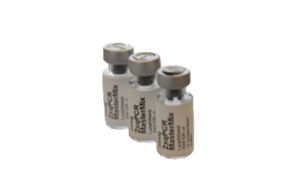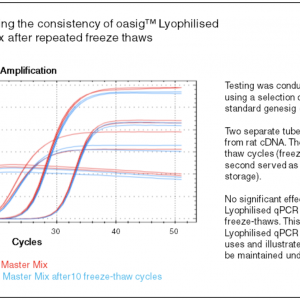Escherichia coli O157:H7
$968.57
In Stock & Ready to Ship
Product features
- Exceptional value for money
- Rapid detection of all clinically relevant subtypes
- Positive copy number standard curve for quantification
- Highly specific detection profile
- High priming efficiency
- Broad dynamic detection range (>6 logs)
- Sensitive to < 100 copies of target
- Accurate controls to confirm findings
Escherichia coli is one of many species of bacteria living in the lower intestines of mammals, known as gut flora. When located in the large intestine, it assists with waste processing, vitamin K production, and food absorption. Discovered in 1885 by Theodor Escherich, a German pediatrician and bacteriologist, E. coli are abundant: the number of individual E. coli bacteria in the faeces that a human defecates in one day averages between 100 billion and 10 trillion. However, the bacteria are not confined to the environment, and specimens have also been located, for example, on the edge of hot springs. The E. coli strain O157:H7 is one of hundreds of strains of the bacterium that causes illness in humans.
E. coli are unable to sporulate. Thus, treatments which kill all active bacteria, such as pasteurization or simple boiling, are effective for their eradication, without requiring the more rigorous sterilization which also deactivates spores. As a result of their adaptation to mammalian intestines, E. coli grow best in vivo or at the higher temperatures characteristic of such an environment, rather than the cooler temperatures found in soil and other environments.
The enteric E. coli (EC) are divided on the basis of virulence properties into enterotoxigenic (ETEC – causative agent of diarrhea in humans, pigs, sheep, goats, cattle, dogs, and horses), enteropathogenic (EPEC – causative agent of diarrhea in humans, rabbits, dogs, cats and horses); enteroinvasive (EIEC – found only in humans), verotoxigenic (VTEC – found in pigs, cattle, dogs and cats); enterohaemorrhagic (EHEC – found in humans, cattle, and goats, attacking porcine strains that colonize the gut in a manner similar to human EPEC strains) and enteroaggregative E. coli (EAggEC – found only in humans).
E. coli O157:H7 was first recognized as a pathogen as a result of an outbreak of unusual gastrointestinal illness in 1982. The outbreak was traced to contaminated hamburgers, and the illness was similar to other incidents in the United States and Japan. The etiologic agent of the illness was identified as a rare O157:H7 serotype of Escherichia coli in 1983. This serotype had only been isolated once before, from a sick patient in 1975.



